EZY Crowd Go, easy crowd guidance optimization
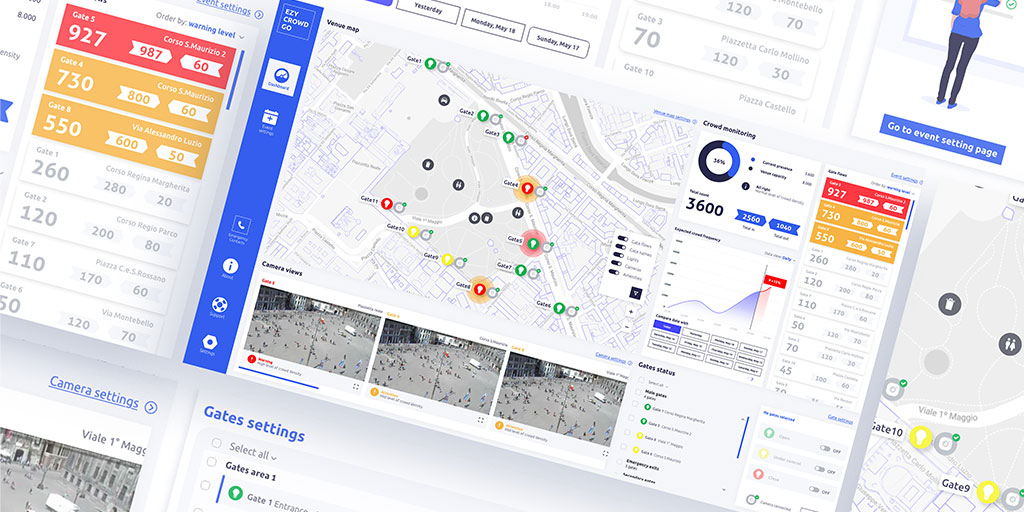
EZY Crowd Go, easy crowd guidance optimization EIT Digital Innovation Factory, European Research Project Share As a partner of the EZY – Crowd Go (an EIT funded project), Experientia co-designed wayfinding solutions to guide crowds during temporary events in public spaces. We conducted stakeholder research and led co-design activities with event managers and security professionals to identify new service opportunities, provide UX guidelines and design the prototype of the IoT dashboard. 3 things to know Clarify the needs and “jobs to be done” Investigate start-up MVP market interviewing stakeholders involved in the event management industry, to clarify needs, pain points and opportunities regarding the management and monitoring of crowds. Define the value proposition Using co-design methodology to identify a long term USP for safe exit strategies during temporary events. Future customers are both public authorities and private organizations that would benefit from using a system that guides event-goers to the least crowded exits. Design and validate the MVP solution Defining UX strategy and guidelines for visitor front-end exit guidance and designing a hi-fi dashboard prototype of the operational lights and sensors back-end IoT. Gallery In depth Service mix: Envisioning Prototyping Service design Context In the context of the European research project EIT (European Institute of Technology) Digital, Experientia co-designed wayfinding solutions to guide crowds during temporary events in public spaces. The IoT solution combines non-invasive WiFi crowd monitoring and crowd guidance directions using smart lights and sensors. Challenge During the initial and exploratory phase, we conducted stakeholder research and led co-design activities with event managers and security professionals to identify new service opportunities. During the design phase, we defined UX guidelines and designed a dashboard IoT prototype for security and facility managers to recommend behavior choices based on a data analysis of crowd-behavior. Research During the “early bird period” November-December 2019 Experientia research team conducted in-person and remote stakeholder interviews. The in-depth interviews allowed us to investigate the research question from a broad, comprehensive perspective. The main objective of the research was to investigate and identify opportunities for temporary event management. Model At the beginning of 2020 Experientia conducted a kick-off workshop with all the partners . We shared insights from the stakeholder and user research phase to inform and define the value proposition. Through participatory and co-design methodologies we facilitated the development of the next phases as well as conducted concept ideation activities. Design Experientia and the Polytechnic University of Milan used the findings from research to frame and define solutions for the design phase.In particular, we define the design guidelines for effective and inclusive crowd guidance and developed three innovative concept for addressing crowds during temporary events. Moreover, our interaction team design and validate the HI-fi prototype of the centralized dashboard, aim to collect crowd data and help operator make decisions and set the light system. Related projects All Services Behavioral design Research and assessment Strategy Cities & InfrastructureSocial innovation ToNite: social innovation and urban regeneration in Turin, Italy Social innovation Turin Public Libraries, redesigning the cultural experience Social innovation COE, Strengthening access to justice through non-judicial redress mechanisms Go back to our portfolio
Qualitative research on food and drink consumption to develop new consumer services
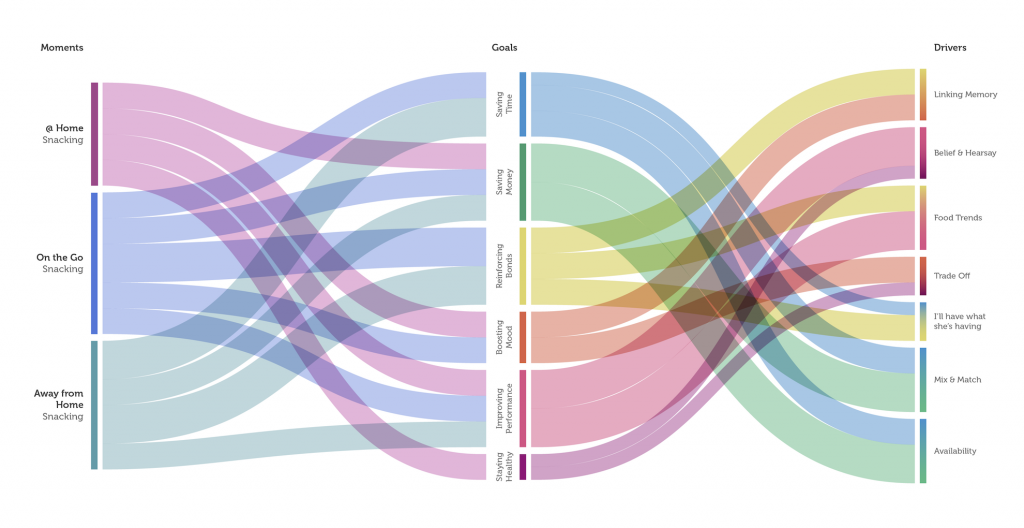
Qualitative research on food and drink consumption to develop new consumer services The Coca-Cola Company Share The Coca-Cola Company has very detailed marketing research, and decided to add to explore the role of ethnography as an additional method to help them identify and map external and internal triggers for beverage consumption. 3 things to know Ethnography as new method An additional method for the Coca-Cola Company to gain insight and explore opportunities. Instagram Participants are asked to take a pictures and describe what they are snacking during the day by receiving a message right before the foreseen snacking time. Insight visualization Strong emphasis on visualization to translate results into actionable opportunities. Gallery In depth Service mix: Design thinking Behavioral modeling Ethnography Context Consumption of food and drink can be tangential and fragmented in our rushed urban lives. The Coca-Cola Company wanted to understand better how to understand people’s behaviors and explore opportunities for new products or services. Challenge The Coca-Cola Company asked Experientia to support them in an ethnographic research project on snack time, that should also act as a learning opportunity for the company. Research Experientia conducted a qualitative research targeting young consumers to help the Coca-Cola Company identify triggers, behaviors and expected rewards in beverage consumption during snack time. The approach involved 9 contextual interviews, 10 hours of fieldwork observations and 4 digital diaries on Instagram accounts. Activities tools such as the routine map, the beverage cards and the packaging cards supported the researchers to collect data from participants’ stories. The insights have been later visualized in order to identify new opportunity areas for the Coca-Cola Company. Design Although mostly a research project, we explored design visualizations to help the company representatives better make sense of the results. Impact The results were presented during an internal workshop in Milan with marketing managers from across Europe, who then iterated on the topics identified, and matched them with their own data. Related projects All Services Behavioral design Research and assessment Strategy Consumer technology Buttonless: engaging users in interactions with keyless devices Consumer technologyFinance BancoSmart, an award-winning ATM Consumer technology Exploring urban dwelling usage to inform appliance design Go back to our portfolio
CityOpt: Engaging citizens to facilitate energy demand responses
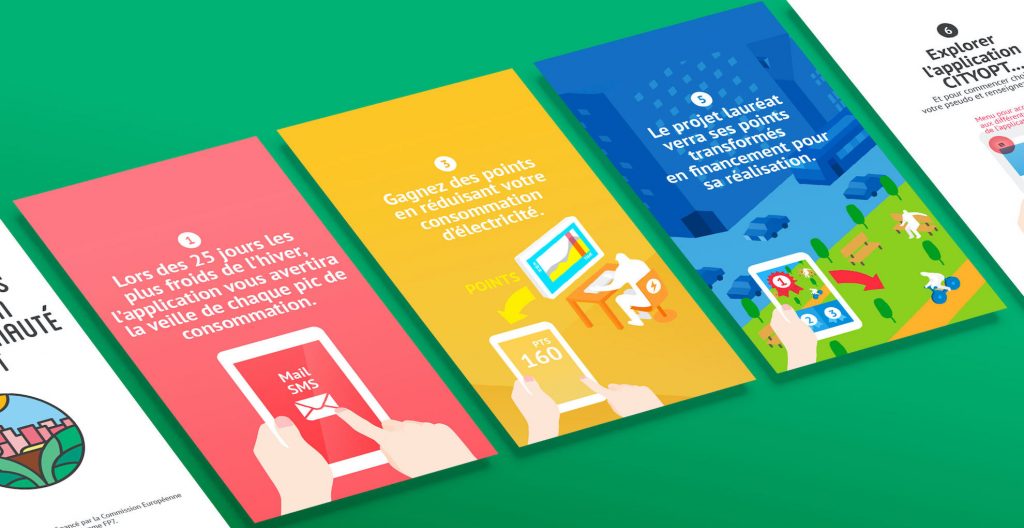
CityOpt: Engaging citizens to facilitate energy demand responses European Commission FP7 Share CityOpt, a research project funded under the FP7 European Commission framework, is getting citizens involved in testing new tools to reduce energy consumption during peak loads, with the goal that this pilot program will set a new trend in protecting locations with fragile electricity supplies. 3 things to know Encouraging behavioral change The CityOpt app helps people reduce domestic energy consumption during energy peak loads and nudges them towards more eco-friendly behaviors. Incentivizing energy reduction Their savings were rewarded with points, which participants could “donate” to a local community project of their choice, helping to maintain people’s engagement with the app. Real time monitoring An office block in Vienna, Austria, uses the CITYOPT app to identify the best scenario to integrate energy supply sources with fluctuating temperatures into an efficient micro-energy network.. Gallery In depth Service mix: Policy development Envisioning Business strategy design Prototyping Information architecture Participatory design Service design User experience testing Context One of France’s most fragile regions, the Provence-Alpes-Côte d’Azur, is perhaps best known for its vineyards, lavender groves and sparkling coastal cities like Nice. It is however also one of France’s most fragile regions for electricity supply. Particularly in winter, when electrical heating sees electricity use rise, the locals experience frequent blackouts, as the local energy provider, EDF, tries to manage the supply. This is why Nice Côte d’Azur has been selected as a pilot city for the CITYOPT project, an initiative that aims to create new methods and tools to deal with energy consumption, and to involve local citizens in designing and testing them. CITYOPT is a pilot programme funded by the European Commission that explores and tests new tools for reducing energy consumption during peak loads. Research Experientia has led the user research activities for the pilot program. User experience methodologies have engaged local citizens from the area in interviews, workshops and design activities. These have defined what people really need to help them control their energy use, and to create a mobile app that the pilot participants will be able to use to do just that. The entire project has applied a user experience (UX) methodology, to make sure that the tools and methods that the project proposes for energy management resonate with the people who will have to use them. It’s not just Nice Côte d’Azur: other pilots are planned for Helsinki, Finland and Vienna, Austria, where similar UX methods are also being applied. Right now, the Nice pilot looks at the residential level, and explores how people’s everyday behaviors can be nudged to better support the energy use of the entire region. Model Changing individual behaviors to help the entire region The Nice Côte d’Azur local population plays a crucial role in reducing domestic electricity consumption during peak loads. To help people change the way they consume electricity, the pilot provides selected locals with the CITYOPT mobile app (aka the CITYOPT Operational tool). The app informs people about upcoming network peak loads, and then uses playful persuasion to get them to commit to lowering their energy consumption at a specific time. How the app was created – a participatory process The Experientia design team also focused on the visual design of the mobile application. In workshops for design idea creation, designers and local stakeholders came together to brainstorm innovative ideas that could potentially be included in the app. A second participatory workshop, again involving local stakeholders, compared these ideas to the expectations and needs of local people, which had been uncovered in the original interviews and workshops with people from the region. The feasibility of the different ideas was discussed, and the final features for the CITYOPT app were selected. Designing, sketching and coding is a long road from ideas to app. First Experientia’s design team, with the support of the local project partners, worked on three wireframes of the app, which defined the information architecture and interaction model for how the app would work. Later on, colors and styles were added, taking it from outline to a fully-fledged design. Experientia then developed the front-end, web-based code, while the consortium partners – CSTB and EDF – implemented the back-end, repositories, hardware interfaces and statistical algorithms. Nice Côte d’Azur Métropole was responsible for localizing the application in French and recruiting local dwellers to participate in the pilot test. Impact The project was piloted with 200 households in Nice using the CITYOPT app during the first wave of testing. During the demonstration test, leader Experientia explored how people use the app, whether they take part in the demand-response scenarios, and what conditions and driving factors are most likely to convince people to participate. The test research was supported by quantitative and qualitative activities like online surveys, contextual interviews and contextual observations. The actual consumption data was also measured through pre-installed smart-meters, and used to evaluate the effectiveness of the CITYOPT system. The CITYOPT project has provided us with real data on effective ways to convince people to reduce their energy use at a level that can help improve the consumption of an entire region. It’s now a matter of scaling up the project to the entire region, and beyond, and providing a body of information that can be used by any region looking for effective ways to reduce energy use. Meanwhile, the other CITYOPT pilot programmes will demonstrate that Nice is not a solitary example, and that user experience methodology can offer real impact on people’s behaviors, and on behavioral change for more sustainable lifestyles. Related projects All Services Behavioral design Research and assessment Strategy Cities & InfrastructureSocial innovation ToNite: social innovation and urban regeneration in Turin, Italy Cities & InfrastructureSocial innovation Low2No: shaping the future of sustainable living Go back to our portfolio
Exploring urban dwelling usage to inform appliance design

Exploring urban dwelling usage to inform appliance design Samsung Share As the urban population (>75%) is supposed to continue its growth, dwellings demand will follow along. The client requested an analysis of Europe’s housing market, its recent past and emerging trends. Focusing on millennials, the generation approaching the property market, we investigated emerging drivers for both dwelling and major household appliances. 3 things to know Dwelling space is increasingly a premium In the three cities, singles/couples look for 55-65 sq m apartments; families are more focused on 70-80 sq m. It is also common for single people to live in studio apartments (about 30 sq m), especially in Milan and Stockholm. House minimum set-up Tenants in Berlin and Milan usually find, in the dwellings they rent, some basic pieces of furniture (table, chairs, beds) besides a functioning kitchen complete with cabinets. Appliances are transient When renting, people have a temporary attitude towards appliances and they tend to buy either less expensive (to leave-in when relocating), small (e.g. toaster, kitchen robot), or portable ones (e.g. free standing fridges). Gallery In depth Service mix: Business strategy design Behavioral modeling Ethnography Context We supported a client in mapping European changes in residential space, identifying population structures in urbanized areas, while highlighting areas where millennials aspire to live. The research predicts changes in the layout and setup of urban abodes and derives opportunities for base-line vs luxury appliance configurations. Challenge We investigated the EU property market and the demographics of Germany, Italy and Sweden to define the target sample fitting the research brief. The ensuing fieldwork aimed at involving realtors, interior architects and millennial owners and tenants in Berlin, Milan and Stockholm. Research We conducted an extensive fieldwork across Europe, touching 3 cities. Contextual interviews and dwelling observations involved 7 realtors, 19 residents and 3 local experts. The visits in millennial homes exposed the research team to the attitude, lifestyle and purchase drivers of this new generation of tenants and owners. Design The analysis of the extensive body of evidence collected resulted in insights about key drivers influencing millennials’ purchase of dwellings as well as home appliances. Participant profiling guided the team in identifying opportunities for home appliance brands that aim at addressing the expectations of millennial customers. Impact The research helped shed light on initial assumptions, discovering evidences for decoupling prime properties and luxury consumer products: people expect kitchen appliances to come in “kits” linked to kitchens. Customers expect to refer to kitchen suppliers for all issues pertaining kitchen components. As cooking habits change and fresh food consumption increases, people tend to forgo appliances that are culturally connected to long-term food preservation. Open floor plans entail kitchens, and the appliances therein are always on the front-stage. When use scenario switches to full entertainment or living, appliances should be able to blend with the rest of the interior. Related projects All Services Behavioral design Research and assessment Strategy Consumer technology Buttonless: engaging users in interactions with keyless devices Consumer technologyFinance BancoSmart, an award-winning ATM Consumer technology Finding entertainment on the go Go back to our portfolio
Mapping the SPID registration journey, to improve the citizen experience
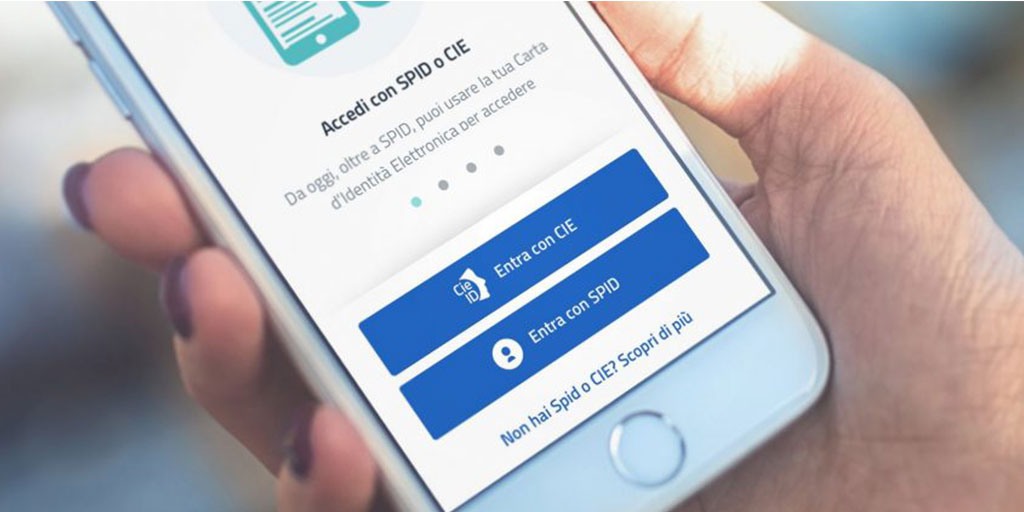
Mapping the SPID registration journey, to improve the citizen experience Department for digital transformation, Presidency of the Council of Ministers Share Driven by the necessity to improve and expand the national system of digital Identity called SPID, the Department for digital transformation, Presidency of the Council of Ministers selected Experientia to conduct a heuristic evaluation to assess the various end-to-end digital registration flows and qualitative research with Italian customers who had registered in the previous 6 months. The objective was to understand the critical needs and pain points in the overall service experience in order to provide UX guidelines and an updated strategic roadmap for improving current processes. 3 things to know A single “key” to access the public administration The government ambition was to provide citizens with a single access method to all the services offered by a multitude of organisations in the public administration. SPID applications grew more than twofold during the first COVID-19 lockdown. A multitude of registration options Our heuristic evaluation assessed 3 different registration processes for the 9 official SPID providers on both desktop and mobile. Some providers offered up to 6 different sign-up flows. People just wanted to avoid queueing The COVID-19 pandemics and the social distancing rules encouraged SPID citizens to sign-up using remote options even for ID validation. One of the strongest motivation to avoid analog ID validation was to avoid queuing in public offices. Gallery In depth Service mix: Design thinking Participatory design Service design Context Driven by the necessity to improve and expand the national system of digital Identity called SPID, the Department for digital transformation, Presidency of the Council of Ministers selected Experientia to conduct a heuristic evaluation to assess the various end-to-end digital registration flows and qualitative research with Italian customers who had registered in the previous 6 months. The objective was to understand the critical needs and pain points in the overall service experience in order to provide UX guidelines and an updated strategic roadmap for improving current processes. Challenge The objective of the project was to understand the critical needs and pain points in the overall service experience in order to provide UX guidelines and an updated strategic roadmap for improving current processes. Research The project started with stakeholder interviews to clearly outline the strategic objectives of the project and of the wider SPID system. We conducted an heuristic evaluation about the UX of requesting SPID to identify major issues in the mobile and computer-based subscription experience. Followed by in-depth interviews with 18 Italian citizens to better understand their overall experience in the subscription and use of the SPID system. Design The analysis of combined research outcomes enabled us to identify crucial issues and opportunities for subscription and service improvement. The recurring patterns of customer expectations and behaviours allowed to build 4 customers journeys based on 4 customers profiles. During a participatory workshop with relevant internal stakeholders, we validated and prioritized opportunities to improve the current UX registration experience and systemic opportunities to support the growth and flexibility of the SPID system for the years to come. Related projects All Services Behavioral design Research and assessment Strategy Cities & InfrastructureSocial innovation ToNite: social innovation and urban regeneration in Turin, Italy Social innovation Turin Public Libraries, redesigning the cultural experience Social innovation COE, Strengthening access to justice through non-judicial redress mechanisms Go back to our portfolio
Singapore: a city for people aging gracefully
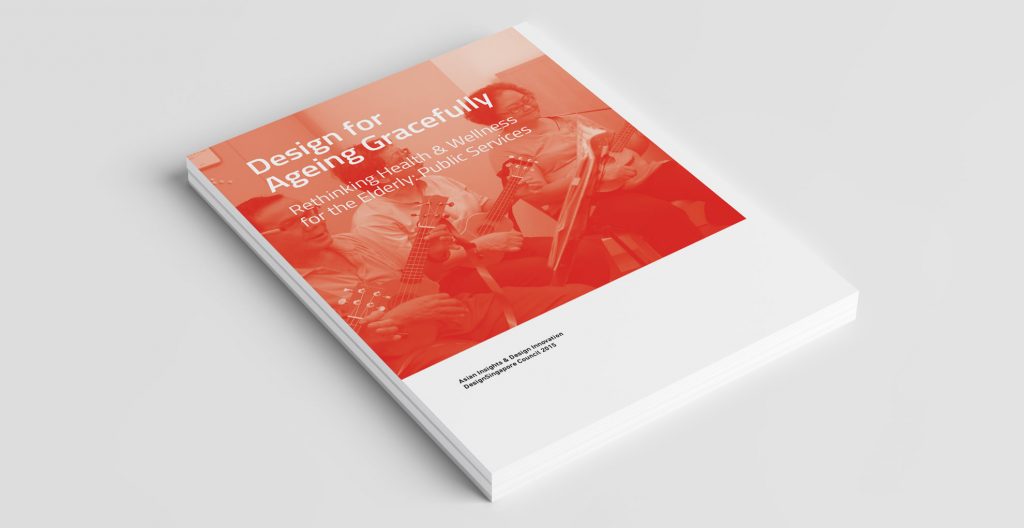
Singapore: a city for people aging gracefully DesignSingapore Council Share DesignSingapore Council asked Experientia to explore health and wellness for the elderly in the Singaporean public sector. We conducted ethnographic research and participatory design workshops, as part of a drive to develop design-led innovation for the health industry. 3 things to know Design ethnography and service design Experientia explored current healthcare experiences of the aging population in Singapore through design ethnography identify opportunities for design-driven innovation in public healthcare. We identified opportunity areas for design-driven innovation in the Singaporean public healthcare space to help Singapore create the right conditions to support a rapidly aging society. Interactive map of findings The interactive map allows people to browse the personas alongside field research videos, that communicate the research findings in the participants’ own words. Long lasting impact The findings have been incorporated in the Health Ministry’s ongoing Action Plan For Successful Ageing, and guided the development of a new residential impact. Gallery Singapore is proactively addressing the problems of a rapidly aging society We explored what is like to grow older in Singapore today, carrying out contextual interviews and shadowing with elderly people, their carers, and people with the healthcare industry. In participatory design workshops with Singaporean stakeholders, we introduced experience design guidelines and created concepts and strategies to improve the elderly healthcare system in Singapore. Our 8 personas show different experiences of aging and using the healthcare system in Singapore. Our customer journeys maps show the typical issues the participants experiences as they tried to manage their health. In depth Service mix: Design thinking Policy development Envisioning Participatory design Service design Behavioral modeling Ethnography Useful links: Download the pdf English language Website External link Singapore press External link Press release External link Press article External link Press article External link Context By 2030, Singapore will experience a profound shift in its age demographics with the elderly population increasing by three times. This calls for a radical change in perspective on how care can be better delivered to the elderly. Challenge To prepare and plan for that change, The DesignSingapore Council’s Asian Insights and Design Innovation (AIDI) programme embarked on a Rethinking Health and Wellness for the Elderly project to look into developing design solutions that better meet the needs of the elderly in Singapore, and asked Experientia to carry out an extensive research and analysis project , including a workshop with participating public agencies and services from the Singapore healthcare system. Research The project started with an understanding of global trends in elderly healthcare services. This was then followed by a design ethnography study through interviews and shadowing – to gather deep qualitative insights into the habits and behaviours of the elderly and to identify trends, behaviors and gaps in the interaction between elderly people and the healthcare system. From the observations, we learned about how the elderly think, act and feel towards managing their health at home and their needs and wants. Experientia developed 8 personas to begin the process of designing for behavioural change and explore solutions like ageing-in-place, peer-to-peer support and community platforms to solve some of the elderly healthcare issues. Participatory workshops allowed stakeholders from the public to be part of this process generating 12 main user-centred design concepts. In two multi-day innovation workshops with healthcare and public service stakeholders, representatives from the healthcare industry and public sector joined Experientia and DesignSingapore Council in Singapore. Here we introduced the challenges the participants face on a daily basis, showing video clips from the research to reveal the human faces behind the research. The stakeholders developed service concepts that would suit the unique characteristics of Singapore. Design Experientia team designed an interactive map of findings, a rich database resource that invites stakeholders to explore and be inspired to innovate and design relevant solutions for the ageing population. The concepts were useful to guide Singaporean healthcare agencies to create strategies, policies and services. The results of the project were compiled in a handy publication for further use in Singapore and freely available for anyone. As part of the project, Experientia also worked with Singaporean agencies and ministries to devise community-focused concepts for elderly residents in the Kampung Admiralty residential block. Co-creation workshops prototyped key policy decisions on ageing, health and housing. Impact Experientia’s report recommendations were widely reported in the Singapore press and were integrated in the Government’s $3billion Action Plan for Successful Ageing (website – pdf – press release – press article). The Kampung Admiralty residential block has been completed. It incorporated many of the concept ideas that were co-created in the Experientia-lead workshops. Download the pdf English language Website External link Singapore press External link Press release External link Press article External link Press article External link Related projects All Services Behavioral design Research and assessment Strategy Cities & InfrastructureSocial innovation ToNite: social innovation and urban regeneration in Turin, Italy Health GoCare: Interactive dashboard for a better home hospitalization service Health Rare disease patient journey mapping Go back to our portfolio
COE, Strengthening access to justice through non-judicial redress mechanisms
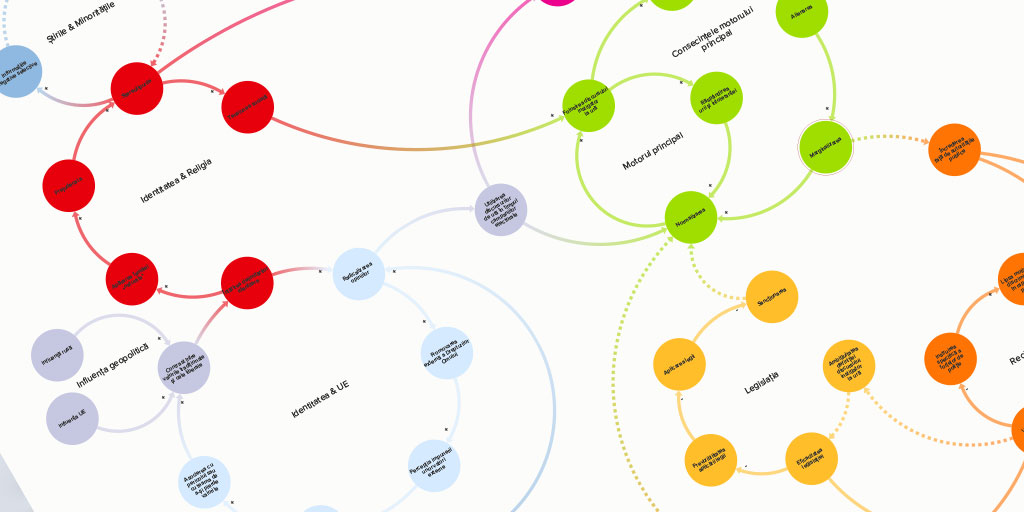
COE, Strengthening access to justice through non-judicial redress mechanisms Council of Europe Share In recent years, we have all become aware of the threat hate speech poses to human rights, democracy and the rule of law. Developing effective strategies to address it has become a major concern for national authorities and civil society actors across Europe. The Council of Europe selected Experientia to map the hate speech mechanisms within some EU countries. 3 things to know The importance of stakeholders Meeting the different stakeholders was essential to understand what were the commonly shared problematics and the specific ones related to each actor. The inclusion of stakeholders in a workshop to define the prioritary issues to overcome was essential, though many different perspectives. A new approach Through meetings with experts, desk research and readings, the team outlined some of the specific aspects and actors contributing to the current situation of hate speech, both in public and private contexts. The team developed a systemic map whose aim is to outline the main mechanisms and factors (and their interconnections) leading to hate speech countries. Future directions and policies The data gathered was useful to map some actions undertaken (mitigating or balancing factors) to prevent and combat hate speech, but also to grasp some early signals of potential future initiatives having an impact on Hate Speech. Gallery In depth Service mix: Envisioning Ethnography Context The Council of Europe selected Experientia to map the hate speech mechanisms within some EU countries. In recent years, awareness has been raised of the threat hate speech poses to human rights, democracy and the rule of law. Challenge Developing effective strategies to address it has become a major concern for national authorities and civil society actors across Europe. Such strategies should enable member states to significantly reduce the incidence and spread of hate speech, while respecting freedom of expression. Experientia mapped the hate speech mechanism and its involved variables through an extensive system map that helped to identify the gaps to fill in the legal framework, in the local services and in the collaboration between public authorities, citizens and politics in the countries that were part of the project. Research During the first phase of the project, Experientia collected and went through a number of documents and reports provided by the local consultants in each country: to build familiarity with the topic. The team went on with the Stakeholder Interviews and took part in a formative workshop session held by the Council of Europe. The stakeholder interviews allowed us to investigate the topic from different perspective and they helped to better detail the draft of the systemic map that was under definition. Design Experientia used the findings from the interviews and the documents to iterate the systemic map and write the systemic analysis report. In particular, we held two ideation workshop to create a space to define and agree upon potential opportunities and measures to be taken against the hate speech spreading and the leading institutions that will coordinate the development of such opportunities in the future. Related projects All Services Behavioral design Research and assessment Strategy Cities & InfrastructureSocial innovation ToNite: social innovation and urban regeneration in Turin, Italy Social innovation Turin Public Libraries, redesigning the cultural experience HealthSocial innovation Singapore: a city for people aging gracefully Go back to our portfolio
CSA: sentiment-based decision support platform for crypto-currency trading
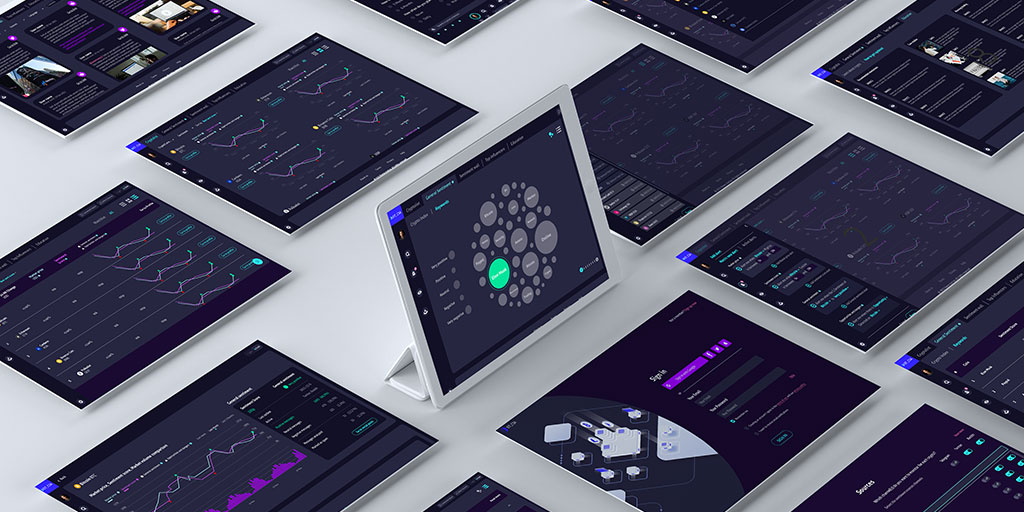
CSA, Sentiment-based decision support Platform for crypto-currency trading EIT Digital, European Research Project Share As a partner of the CSA-Crypto Sentiment Advisor (an EIT research project), Experientia co-designed a web-based dashboard to inform better decisions in the crypto market. Leveraging traders’ individual level of expertise, the solution aims to mitigate risk by using real-time community sentiment data. 3 things to know Understand the habits of cryptotraders By interviewing cryptotrading experts and cryptotraders with different levels of experience, we were able to understand their habits, their sources of information, and the web platforms currently most used by those who invest in cryptocurrencies. Define the value proposition Using co-design methodology we worked with other project partners to identify a USP and the platform’s MVP: a dashboard to inform better decisions in the crypto market by using real-time community sentiment data. Design and validate the MVP solution Based on the results of the research and the co-design work done with the project partners, we designed the UX/UI of the platform, validated it with user interviews, and defined web development specifications. Gallery In depth Service mix: Design thinking Prototyping Information architecture Participatory design Ethnography Context As a partner of the CSA-Crypto Sentiment Advisor (an EIT research project), Experientia co-designed a web-based dashboard to inform better decisions in the crypto market. Leveraging traders’ individual level of expertise, the solution aims to mitigate risk by using real-time community sentiment data. Challenge The platform is based on a sentiment analysis model for cryptocurrency using advanced machine learning methods. Investors can use the signals to manage volatile phases of their portfolio to be well positioned in difficult times. During the research phase, Experientia conducted research interviews with lead users and led co-design activities with project partners to identify the Value proposition and the MVP functionalities. In the design phase, we designed the dashboard prototype and validated it with potential users. Research During the “early bird period” November-December 2020 Experientia research team conducted remote stakeholder interviews. The in-depth interviews allowed us to investigate the research question from a broad, comprehensive perspective. The main objective of the research was to investigate and identify opportunities for helping cryptotraders with sentiment-analysis tool. Model At the beginning of 2021 Experientia conducted 2 workshop with all the partners. We shared insights from the stakeholders and user research phase to inform and define the value proposition. Through participatory and co-design methodologies we facilitated the development of the next phases as well as conducted UX concept ideation activities. Design Experientia utilized findings from research to frame and define solutions for the design phase. In particular we design and validate the HI-fi prototype of the Sentiment-based decision support Platform for crypto-trading. Related projects All Services Behavioral design Research and assessment Strategy Finance Banca 5, a new branchless bank model Consumer technologyFinance BancoSmart, an award-winning ATM FinanceHealth XME Salute: integrating insurance offerings with wellness and health practices Go back to our portfolio
Turin Public Libraries, redesigning the cultural experience

Turin Public Libraries, redesigning the cultural experience CSI Piemonte Share CSI Piemonte partnered with Experientia to redesign the new digital experience for Turin public libraries: an ecosystem of more that 15 local libraries spread across the Turin area. Weekly design thinking workshops and co-creation activities with the local libraries team allowed us to gather all the different perspectives of a complex reality diversified among the territory. 3 things to know One website, more that 15 local libraries The website of the Turin public libraries (“Biblioteche Civiche Torino”) gathers all the information connected to more that 15 local libraries spread across the territory. Every library has its own audience, events, reading proposals, services and articles. Library directors highlighted the importance of each library: every user sticks to his neighborhood library rather than being a frequent visitor to all libraries. For this reason, creating sub-homepages for each library was important to support users in their usual behavior using the service. Design thinking workshops Design thinking methodology was applied in order to achieve a final website that was cohesive and could meet all the different needs among the complex and diversified contexts of the territory. Weekly meetings with the librarys’ selected tea allowed a step by step approach and the possibility to validate each part of the website with the stakeholder in charge of that service: events, programs and projects, children section, historical and local collections. A piece of an ecosystem The website is a part of a complex ecosystem composed of a catalog online and a digital lending platform. The two services (catalog and digital lending) are not located within the Turin public library website but instead in different domains. These three platforms have to recall each other’s contents and give the perception of a solid ecosystem. Information architecture methodology and content organization were necessary in order not to lose any pieces during product integrations. Gallery In depth Service mix: Prototyping Information architecture Participatory design Useful links: Biblioteche civiche torinesi External link Context The Turin Public library website had to be updated in terms of information architecture and prioritization of informations, as well as visual presence and new look and feel. The portal is the final stage of the “Rethinking Turin Civic Libraries” project, launched in 2019 on the occasion of the 150th anniversary of the founding of the Central Civic Library and supported by Intesa Sanpaolo. Research An extensive desk research allowed the team to spot best practices and common design patterns used by the most important library websites. A detailed content audit was necessary to be sure that each information of the “old” website would have been revised during the redesign. Weekly meetings with stakeholders and two specific workshops (directors of local libraries and kids&teens audience) were the key stages to came out with important insights that led the design choices. Design The redesign of the website was supported by information architecture and wireframes activities. The responsive website is designed with a mobile first approach and uses common design patterns, usability rules and accessibility. See here for the final outcome of the project. Biblioteche civiche torinesi External link Related projects All Services Behavioral design Research and assessment Strategy Cities & InfrastructureSocial innovation ToNite: social innovation and urban regeneration in Turin, Italy Social innovation COE, Strengthening access to justice through non-judicial redress mechanisms HealthSocial innovation Singapore: a city for people aging gracefully Go back to our portfolio
BancoSmart, an award-winning ATM
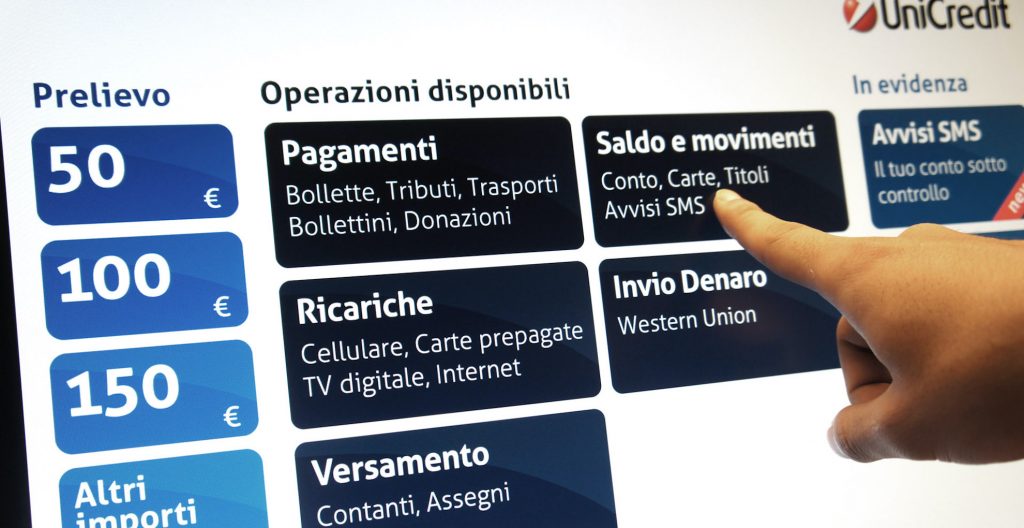
BancoSmart, an award-winning ATM UniCredit Share The human-centered approach is now central to the finance industry, as banks have become savvy in how to best connect to their customers’ needs and desires. As part of this trend, global banking and financial services company UniCredit Bank asked Experientia to create a user-friendly, people-centered ATM – the BancoSmart. 3 things to know Easier and faster The BancoSmart offers more services by using an advanced algorithm that offers users a personalized home page, geo-referenced billing options and tailored services. Improved usability Its UI makes it easier and more intuitive to use, including for people with poor vision; all levels of literacy and non Italian speakers. It is 33% faster in use, has attracted more than 25% of new (non UniCredit) customers, and reduced error rates (non-conclusive interactions) to less than 1%. First mover in Italy First Italian ATM using a touchscreen interface, allowing intelligent and optimized menu interactions. It has been rolled out all across the country. Gallery Video https://player.vimeo.com/video/110351007 In depth Service mix: Design thinking Information architecture Service design Useful links: ADI index showcase Blog post Context ATMs are highly regulated in Italy: to make banking accessible they have to provide a wide range of services, including the payment of various utilities. Many ATM interfaces are not user-friendly and force people to wade through a succession of many screens. They use a language and an organization that reflects the bank, rather than the lived financial experience of the customer. Challenge UniCredit came to Experientia to refresh and redesign the interface. It had to run on various ATM hardwares including legacy terminals of different providers with various screen sizes and tech specifications. We convinced the bank that it could be reinvented, even within the constraints of regulation, hardware and underlying software. Research Experientia carried out in-depth user experience research with ATM users across Italy, spot interviews of current ATM users, stakeholder interviews, card sorting sessions and heuristic evaluation of existing UniCredit and competitor interfaces. This provided foundation for the information architecture and service design of the ATM.We also conducted card sorting activities to create a new navigation structure that fits people’s expectations of where to find features and functions. Design Experientia designed a responsive full touchscreen design solution that works on the various ATM’s. We ran multiple cycles of design, prototyping and usability & user acceptance testing to ensure that the final interface is strongly based on people’s financial behaviors and exceeds their expectations and needs for ATM use. The new menu structure offers much clearer guidance on what functions are found in each menu area, and always offers people the chance to go back to the home page. It has now been rolled out to all UniCredit’s Italian ATM branches. Impact Experientia has reinvented the ATM interface for UniCredit – making it easier to use, faster, and with more services. One of the key innovations is its level of personalization – the ATM has a personalized homepage, with service offers tailored to people’s banking profiles, and a speedy withdrawal function that offers the three most commonly used withdrawal amounts, personalized to each individual user based on their past behavior. Placing these three amounts on the homepage cut the withdrawal time by 30%. Public reactions to the BancoSmart interface have been extremely positive, with clients commenting on the increased speed, legibility, appealing graphics, and the improvement in features and functions. The highly intuitive ATM interaction allows clients to easily navigate, locate and use functions, from simple features like cash withdrawals to more complicated functions like deposits, information retrieval, bill payments and mobile phone top-ups. The interface is visually attractive and easy to read, with large fonts and clear banking function categories. Bancosmart was selected for the ADI Design Index, the annual publication showcasing select Italian Design products considered for the Compasso d’Oro International Award. View our ADI Design Index showcase here. ADI index showcase Blog post Related projects All Services Behavioral design Research and assessment Strategy Finance Banca 5, a new branchless bank model Finance CSA: sentiment-based decision support platform for crypto-currency trading FinanceHealth XME Salute: integrating insurance offerings with wellness and health practices Go back to our portfolio

